Scientific name Heimia Rank Genus | Subfamily Lythroideae Higher classification Lythroideae | |
Similar Heimia salicifolia, Lythraceae, Calea ternifolia, Calea, Decodon verticillatus | ||
Heimia is a genus of flowering plants in the loosestrife family, Lythraceae. It contains two or three species of closely related shrubs commonly known as sun opener or shrubby yellowcrest. They are native to the Americas, from northern Argentina north to the southernmost United States (southern Texas). The leaves are 2–5 cm long and 1 cm broad, entire, and variably arranged alternate, opposite or whorled on the stems. All species produce five-petaled yellow flowers. The plants have a history of medicinal use in a variety of American cultures. Several pharmacologically active alkaloids have been detected in the plants. The generic names honours German physician Ernst Ludwig Heim (1747–1834).
Contents
- Species
- Heimia myrtifolia
- Heimia salicifolia
- Secondary metabolites
- Alkaloids
- History
- Cultivation
- References
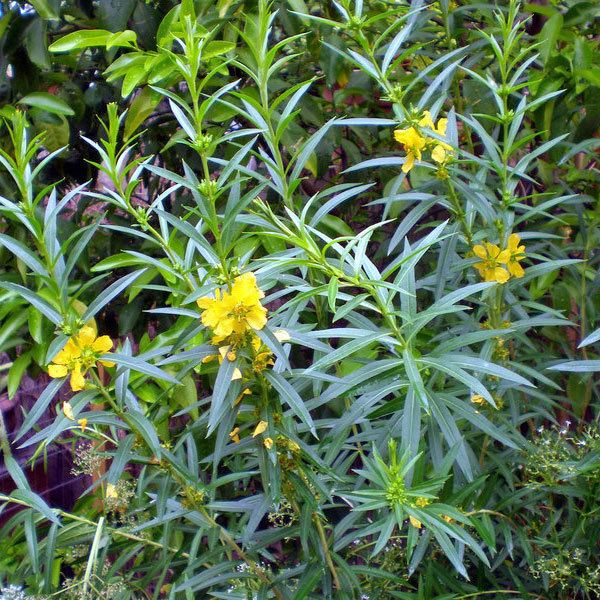
Species

The genus contains three species. They are similar to the extent that expert knowledge is required to differentiate between specimens of the different species. The alkaloid contents of specimens of all three species has been studied, and although similar, they have been found to be chemically distinct.
Heimia myrtifolia
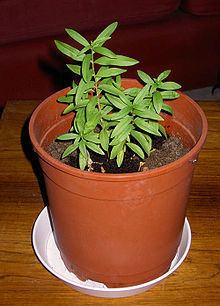
Heimia myrtifolia is a shrub growing to 1 m tall. The yellow flowers are 5 petaled and 1 cm in diameter. The leaves are approximately 5 mm wide by 2–3 cm long.
Heimia salicifolia
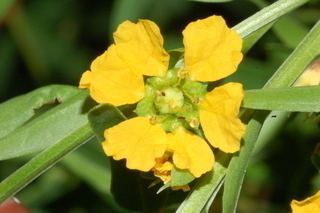
Heimia salicifolia, commonly known as Sinicuichi, is a shrub growing to 3 m tall. The yellow flowers are 5 petaled and 2–3 cm in diameter. The leaves are approximately 1 cm wide and 3–5 cm long.
Secondary metabolites

The alkaloid content is similar between the species in the genus. The following substances have been detected in Heimia salicifolia:
Alkaloids
History
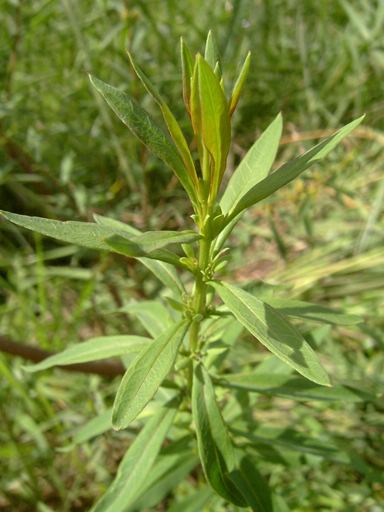
Heimia myrtifolia and Heimia salicifolia are often reported to have hallucinogenic effects. This controversial attribution of effects appears to be traceable back to a publication by J. B. Calderón in 1896 who wrote that it was said to possess a "curious and unique physiological action ... people drinking either a decoction or the juice of the plant have a pleasant drunkenness ... all objects appear yellow and the sounds of bells, human voices or any other reach their ears as if coming from a long distance."
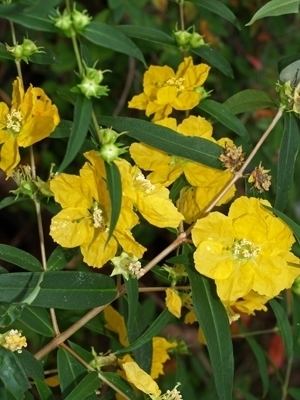
Calderón actually tested the plant and did not experience any noticeable effects. Through a series of exaggerating and dramatizing citations, especially by Victor A. Reko in the first half of the last century, the plant became known as a hallucinogen despite that psychoactive properties of the plant have never been demonstrated. The mildly psychoactive effects described in the original publication have therefore been attributed to a sedative principle or unknown other contents of the brew or, simply, to its alcohol content.
In 1926, Reko observed that the native people of Mexico also called the stem and bark of Erythrina coralloides, the bark of Piscidia erythrina, and the seeds of Rhynochosia praecatoria by the name of sinicuichi, which may have contributed to the scientific confusion.
Cultivation
The species make attractive ornamental plants, flowering in late summer. Although only growing as a shrub in subtropical climates, it can also be grown as a herbaceous perennial in colder areas where the above-ground growth is killed by winter cold. The plants produce very many tiny seeds which are easily cultivated. The seeds should be sown thinly across the top of fine, packed soil.
Both species prefer well-drained soil with a good supply of water. The seedlings should be watered by a fine mist or with bottom watering to avoid washing them off to the side of the pot. They should be kept out of intense sunlight until they form the first real leaves. It may be necessary to spread the seedlings out in their initial pots to avoid over-crowding. The seedlings should be moved to at least an inch apart once they are large enough to handle. Be aware that small seedlings of this species often have relatively large root structures. A plant less than a quarter-inch tall may have roots up to two inches deep.
